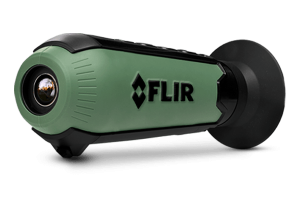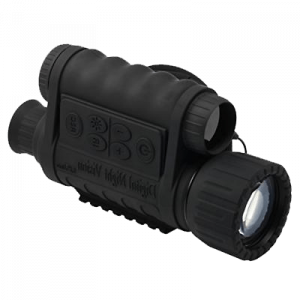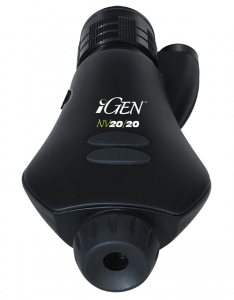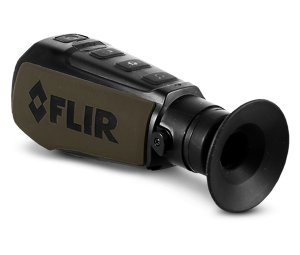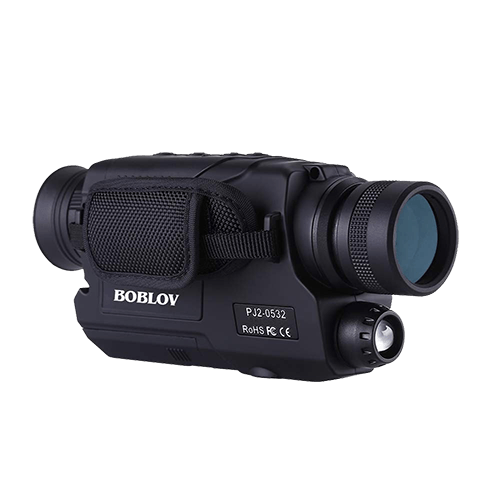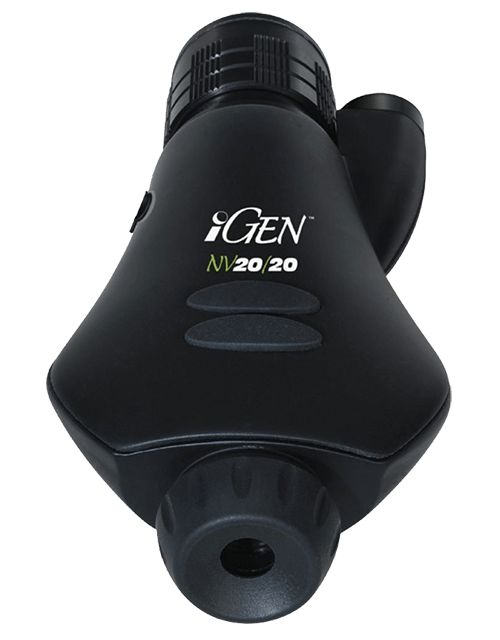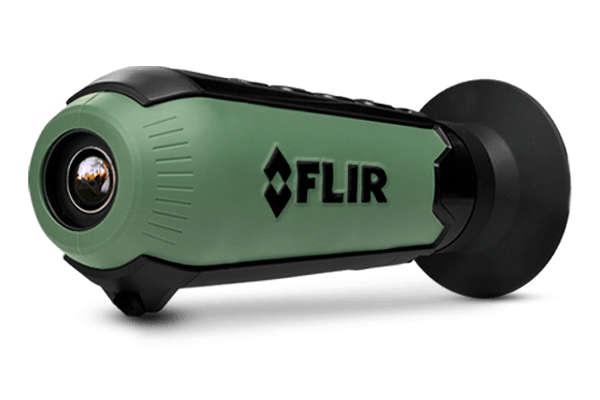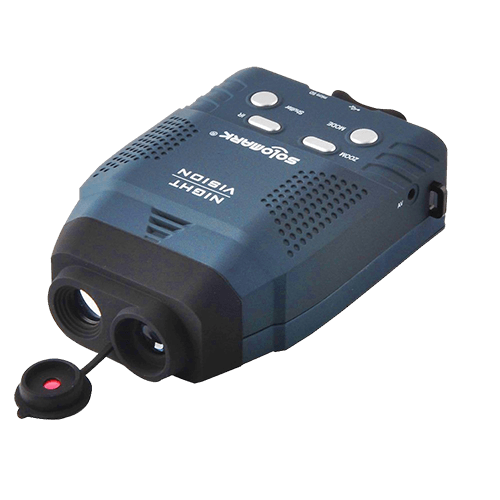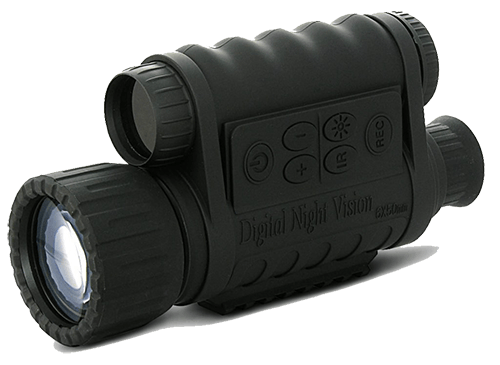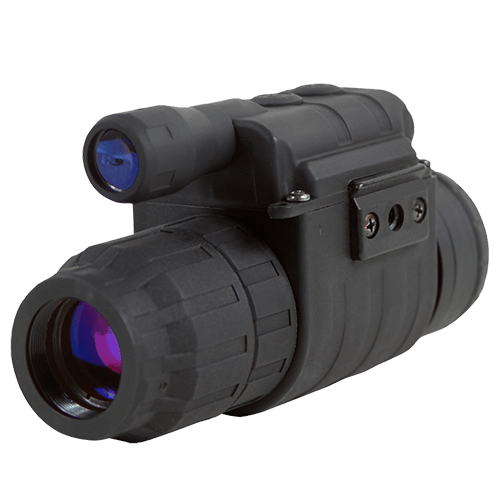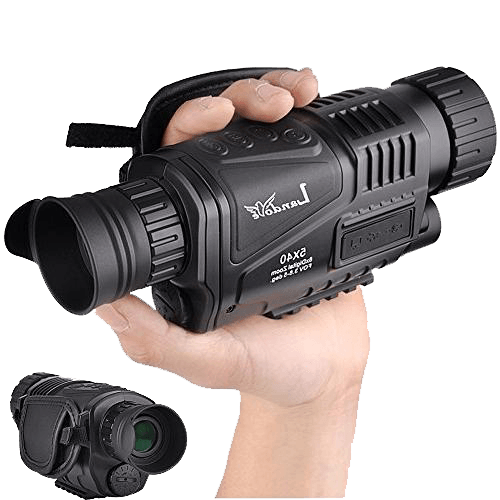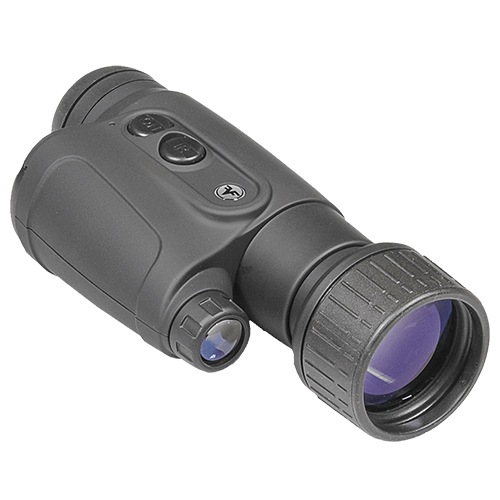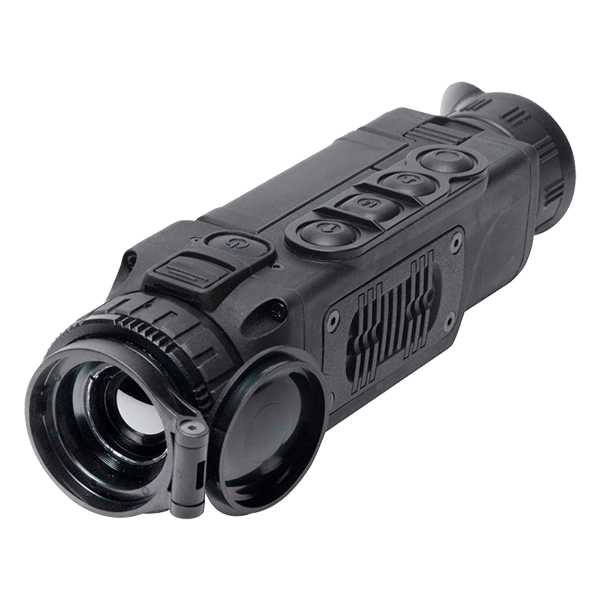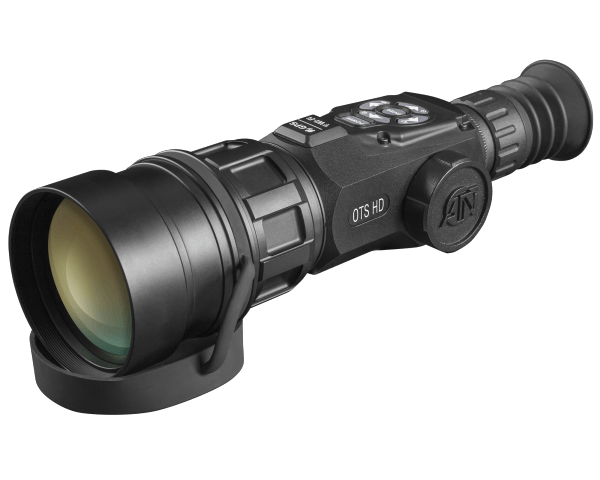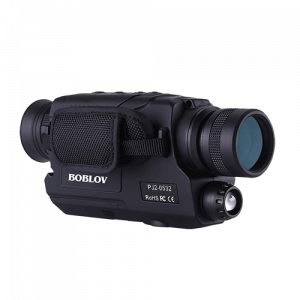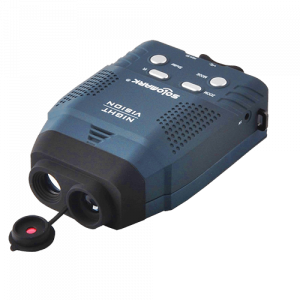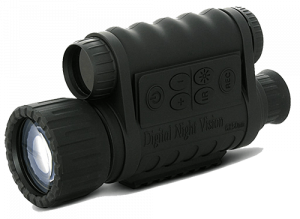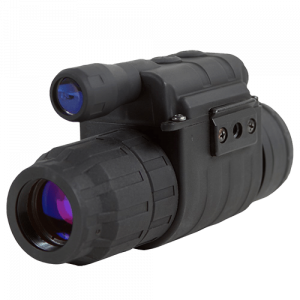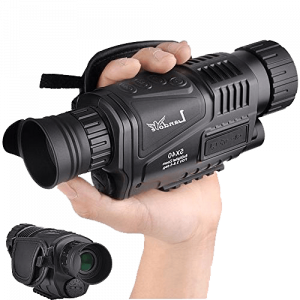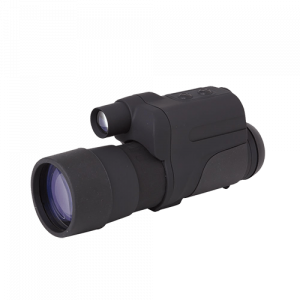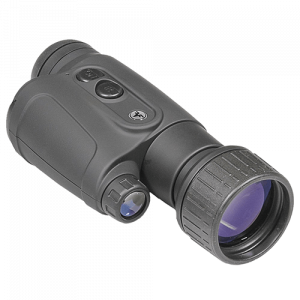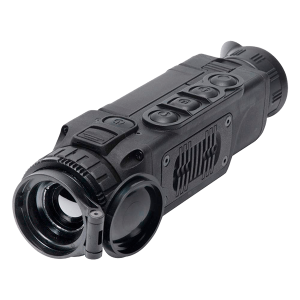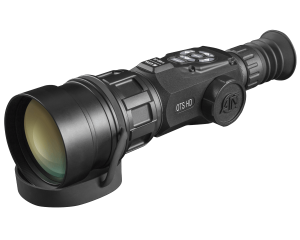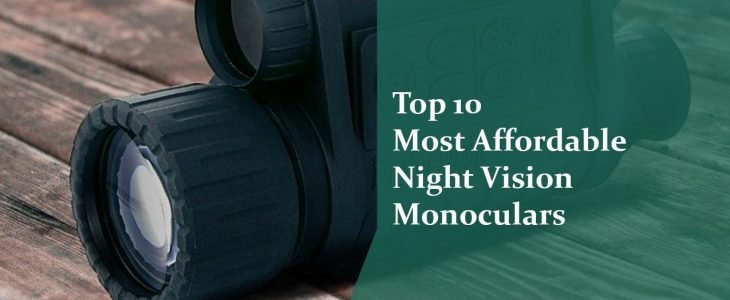
The ability to see in the darkness is not innate in humans, as it is in many animals. We see objects because of the light they emit or reflect. In the darkness, there is little to no light to reflect or being emitted, and the pupils in the eyes cannot detect that level of light. Some animals, such as cats and owls, however, have evolved with larger pupils to enable them to see more clearly in the dark.
As with many of today’s inventions, a military need drove the development of science to enable us to see in the dark. Aircraft detection at night in the UK was causing problems during World War I, and a Hungarian scientist, Kalman Tihanyi, developed an infrared sensing camera to help solve that issue.
Our Personal Best Choice
Just so you don’t have to keep scrolling up and down this document, let’s summarize everything in one place. Here’s a list of the “best of” night vision monoculars, based on the overall price, customer ratings and reviews, specifications and features, and the pros and cons of each of the models we reviewed:
The German military began to equip their tank fleet with night vision devices in the 1940s, following their development in the late 1930s. American snipers began using night vision rifle scopes late in World War II, and also during the Korean conflict in the 1950s (Wikipedia).
In this article, we’ll be looking at a cross-section of monocular night vision devices. Some will be hybrids, containing both night vision and camera functionality. Some will be thermal-based technology, where the NVD will sense heat from the target, and not rely on light to “see.” Some of these thermal cameras will also have camera capability. Our cross-section will cover a baker’s dozen night vision monoculars – ten in the “budget” category, and another three in the “professional” application area.
Comparison Table
As noted, we’ve put together a list of thirteen monoculars, in one configuration or another.
** – under 25 customer reviews
How a Night Vision Monocular Works?
Before we jump into the next section of this article, let’s take a look at how a night vision monocular works.

Night vision goggles boost a dim, dark scene in a series of simple steps:
-
1. Dim light from a night scene enters the objective lens at the front. The light is made of photons (particles of light) of all colors.
-
2. As the photons enter the goggles, they strike a light-sensitive surface called a photocathode. It’s a bit like a very precise solar panel: its job is to convert photons into electrons (the tiny, subatomic particles that carry electricity around a circuit).
-
3. The electrons are amplified by a photomultiplier, a kind of photoelectric cell. Each electron entering the photomultiplier results in many more electrons leaving it.
-
4. The electrons leaving the photomultiplier hit a phosphor screen, similar to the screen in an old-fashioned television. As the electrons hit the phosphor, they create tiny flashes of light.
-
5. Since there are many more photons than originally entered the goggles, the screen makes a much brighter version of the original scene.
So, regardless of whether we are talking about night vision scopes, monoculars, binoculars, cameras, or goggles, the operational aspects are exactly the same – gather and amplify whatever light is available – moonlight, starlight, etc. – and use that amplified light to enable improved night vision.
While we will talk about thermal vision here also, that technology is different than night vision. Thermal devices will capture sources of heat, and make these sources stand out from the surrounding area. Some of these models also can be used for both night and normal daylight viewing.
NVDs can be used for a wide variety of applications. We’ve already touched on law enforcement, military, and search and rescue, and they can also be used for wildlife watching, human surveillance, navigation, and detecting hidden objects, right down to where your dog is hiding in the back yard. Some of these models, because of the military technology used, are not eligible to be exported. And, as noted, various state or local regulations may ban or limit their use in specific applications. Please verify the applicability with your local regulations.
Night division devices normally fall into one of three main categories:
-
The first is night vision cameras. These are often put into a fixed location, such as the side of a building, warehouse, or parking lot, for security purposes. The images they capture can either be recorded and reviewed later or sent to a monitor, where they can be watched in real-time.
-
The second category of night vision devices is binocular goggles, having two eyepieces. Goggles can be handheld, as in the case of night vision binoculars, but can also be head- or helmet-mounted, which is often seen in the military, law enforcement, and search and rescue operations where it is important to keep the hands free.
-
The third category of devices is scopes; these are monocular devices, those having a single eyepiece. They are often handheld and used in situations where you will want to look at something, then return to normal vision. Many times, you will see scopes mounted to rifles as an aid to hunters. It should be noted, however, that there are some restrictions to rifle mounted night vision scopes, so you should consult your local or state regulations before purchasing for this application.
Buying Guide
If you want to make the buying decision for one of these monoculars that is exactly right for you, it’s important to spend some time to understand the various features and specifications available on these units, and their use in the unit operation. You can find significant variation even within the same specification on these NVMs; for instance, the viewing range may vary from a hundred yards up to a couple of thousand yards. One way to view all the different possibilities of features and specs is to rate them for your specific needs – some will be “gotta have”; no sense buying the unit if it does not have that capability. Others will be “nice to have”; they are not operation critical, but it’s probably something you would use, and it would enhance the experience using the NVM; and the last would be “bells and whistles”, features that are going to add to the cost of the monocular, but really are not needed, or even will be used, based on your equipment needs.
Final words about features and specifications. Most of what you find here, and in the next section of individual reviews, will be drawn from the Amazon web site, occasionally supplemented by information from the manufacturer or other resellers. Because of this, not all of the units will report on the same features and specifications, so further research on your part may be necessary.
Best Night Vision Monocular Reviews
Boblov Digital NVM
5X magnification, combined with a 32mm objective lens, combine to give a solid range length with a nice clarity of the image. Battery life is a fairly short 2.5 hours with the illuminator on, 5 hours without it. The filter is included for daytime use, built in hand/wrist strap for comfortable use.
Pros
- Very strong optics with 5×32 combination
- One of the lowest priced units on the list
- Built-in microphone to record sound with videos
Cons
- Only four customer reviews to date
- Only black and white imaging after dark, color only available in daylight photos or videos
Bestguarder HD NVM – Best Value
Superior 6×50 optics give high clarity images at up to 350 meters night time viewing. Both camera and video (with the sound capability) take high-resolution HD images. 1.5” viewing screen, day and night capable, IPX4 water resistance makes this a full use NVM.
Pros
- Superior optics with adjustable zoom for close in or wide-angle viewing
- Four IR levels, 3 brightness levels for clarity control
- Supports up to 32GB SD card (not included)
Cons
- Very limited battery life with IR illumination on
- Only 4oo field of view
Night Owl iGen Day/Night NVM – Best Overall Model
Proprietary technology is claimed to exceed third-generation technology. Enhanced infrared technology and additional light amplification (up to 650 times on ambient light) offer high-level clarity and viewing. Ten levels of IR intensity, 4 levels of brightness adjustment.
Pros
- The major selling point is the quality of the optics, based on the enhanced sensitivity to ambient light and the ability to generate additional IR light
- Wide FOV at 12o
- 85% of reviews 4 or 5 star
Cons
- Second highest price of the ten budget units
- Several restrictions on sales noted
- Battery life is not very good – only a few hours on four AA (not included)
Flir Scout TK Thermal NVM – Best Performance Model
This is a hand-held thermal imaging monocular, so a different technology than the night vision monoculars already reviewed. 640 x 480 pixels LCD display, small 6” x 2” x 2” size, 6 oz. weight, for portability. Five palette choices, camera, and video capability.
Pros
- Strong viewing options, with the palette choices letting you customize screen colors
- Separate focus control, eight levels of brightness control
Cons
- Highest priced unit, but also a different technology
- Several restrictions on use, export, purchase
- Complaints about tech support and service
Solomark Night Vision Monocular
Screen resolution is 320 x 240 pixels, so not as clear and crisp as some of the models. Supports SD cards from 1GB to 32GB for photo and video storage. Lightweight at only 12 ounces, it comes with a 4GB SD card, audiovisual cable, and USB cable.
Pros
- Price. Very reasonable, and a 3.9 rating behind it
- 75% of ratings 4 or 5 stars
- Seven levels of IR illumination to help obtain the best possible brightness of the image
Cons
- No sound recording, no way to helmet or head mount
- Several complaints related to overstated viewing range, clarity of images
Bushnell 260150 Equinox NVM
There is very limited information on this model on the Amazon site, and, somewhat surprisingly, not that much on other sites where it is offered. It has 6×50 optics, and a 6.6 to 18X digital zoom, so image quality should be fairly good. It draws a 4.2 rating on another site, similar to the 3.9 on Amazon. It has a built-in, adjustable illuminator and brightness controls, and claims a 330-yard range with full illuminator operation.
Pros
- Coated optics to reduce glare and increase light transmission
- Day and night operation; color screen during one-day operation
- Capable of being rifle mounted (verify legality in your state/locality)
Cons
- Complaints about very short battery life, and overall image quality despite the optics
- A bit clunky at 9” x 5” x3”, close to 2#
Sightmark Ghost Hunter NVM
2×24 optics, with a built-in IR illuminator that lends itself to close in viewing. Lightweight and compact at 4” x3” x 9”, 8.8 ounces; polymer construction. Limited information on the Amazon site more available on the manufacturer’s site. Three-year warranty on the tube, limited lifetime on the housing.
Pros
- Price is at the lower end of the scale for this list
- Weight and size make for good ergonomics
- Battery life is good
Cons
- Very limited features compared to other models
- 17% of reviews were one- or two-star, and most of those extremely negative
Double Sun HD NVM
Optics are 5×40, with a 1.5” LCD screen. Supports day and night use, video and photos, 8GB SD card included. Weighs in at 1.5#, 9” x 5.5” x 3”. Comes with a rechargeable, replaceable battery. Claims up to 200-meter range in full dark viewing. Limited number of customer reviews.
Double Sun HD NVM
Features and specifications:
- comfortable design with hand/wrist strap for good ergonomics
- up to 8X digital zoom, 5X optical zoom, 40mm objective lens
- comes with USB and video cords for transferring data to computers or monitors for viewing
- manual brightness and sharpness adjustment, 400 x 200 pixels clarity
Pros
- Under $200 price for a reasonable list of features
- Has rail available to mount extra IR illuminator if desired
Cons
- Very short battery life with IR. Claimed under one hour by reviewers, manufacturer lists as 1.5 hours
- Only 5o field of view
Firefield FF24063 NVM
Another model with very limited information available on Amazon. The device has 4×50 optical and is rated water resistant. Operates on two AAA batteries, included, and comes with a three-year warranty. It has a rated 130-yard range of detection. Lowest priced NVM on the list but limited functions – no camera or video.
Pros
- Reviewers claim battery life is decent
- Meets expectations if you are looking for a short-range device at a reasonable price point
Cons
- Picture is claimed to be grainy
- Difficult to focus
Firefield FF24066 NVM
Much like the prior model, not very much information available on the Amazon site. This model has 5×50 optics, 5X magnification, and is geared to provide a better-quality image and resolution. With built-in IR, a rubberized housing, and an ergonomic design, it’s well suited for field use in various operations and hobbies.
Pros
- Price is only slightly higher than the FF24063 model, but better optics with this model
- Battery performance is also rated as fairly good with this model
Cons
- Image quality is not rated well, and the unit is difficult to focus and adjust
- Range of vision not rated well by users; short with poor quality imagery
Best Professional Night Vision Monocular Reviews
Pulsar Helion XP
This is a thermal monocular, as opposed to most of the other models, which are night vision through light amplification. As we noted earlier, thermal devices will use differentiated temperature to highlight images. With a $3500 price tag, this is definitely a professional grade. This model can detect a man-sized image at up to 1100 yards – almost 5/8 of a mile.
Pros
- Three-year warranty on the unit, ten-years on the sensors
- Pretty much everything you could ask for or expect in a thermal sensor
Cons
- Price is pretty scary to the average Joe
- Only seven reviews on this model
Flir Scout III Thermal – Best Professional Model
This is another professional grade, thermal unit. At 12 ounces, it’s easily portable, and it can detect heat signatures at up to 1200 yards. A 640 x 480 pixels LCD screen gives bright and clear image differentiation, supported by a wide choice of color palettes. A 5-hour battery life, the 24o field of view, and a wide operating temperature range make this unit a good choice for military, rescue, and police operations.
Flir Scout III Thermal
Features and specifications:
- sized at 9” x 10” x 3.7”, and only 12 ounces, this is a good, portable unit for in the field operations
- a rechargeable battery system lasts up to five hours of use
- delivered with all cables, charging systems, batteries, etc. Easy transfer of stored images
Pros
- $2000 less than other similar thermal detectors, with similar features
- All the basics and enough bells and whistles to keep even the most tech-savvy user happy
Cons
- Limited reviews, which show a bit of a love-hate relationship. 70% five stars, 20% three stars, 10% one and two stars
- Price is significantly lower than the other two professional models but still represents some serious money. Still not a good fit for the casual user
ATN OTS-HD640
At least based on price, this is the big brother of the three professional-grade models. It’s also the big brother in features and options, including rangefinders, wi-fi, compass, gyroscope and much more. It has magnification from 2.5X to 25X, with 640 x 480 pixels HD resolution. It’s wi-fi compatible with both iOS and Android phones for instant image streaming.
ATN OTS-HD640 Thermal
Features and specifications:
- works in both day and night modes
- highly accurate range finder is a good feature for hunters
- e-zoom functionality reduces jerky transition of images as you move from far to near and reverse
- instant recording to SD cards, or streaming to compatible devices for storage and viewing
Pros
- The device has pretty much anything you could want in a thermal unit. All the basic functionality, plus any option you can think of
- There is actually a $1000 higher priced model in the same family, which makes this look like a bargain
Cons
- $3900. Do I need to say more?
- Only four reviews on this product
Conclusion
We hope this review of best night vision monoculars will help you make a faster, informed decision if you are planning a purchase of a monocular any time soon. With such a wide range of specifications and features, and so many different applications to fit them into, it may be a difficult decision, but we’re sure one of the products here will meet your requirements and expectations.

